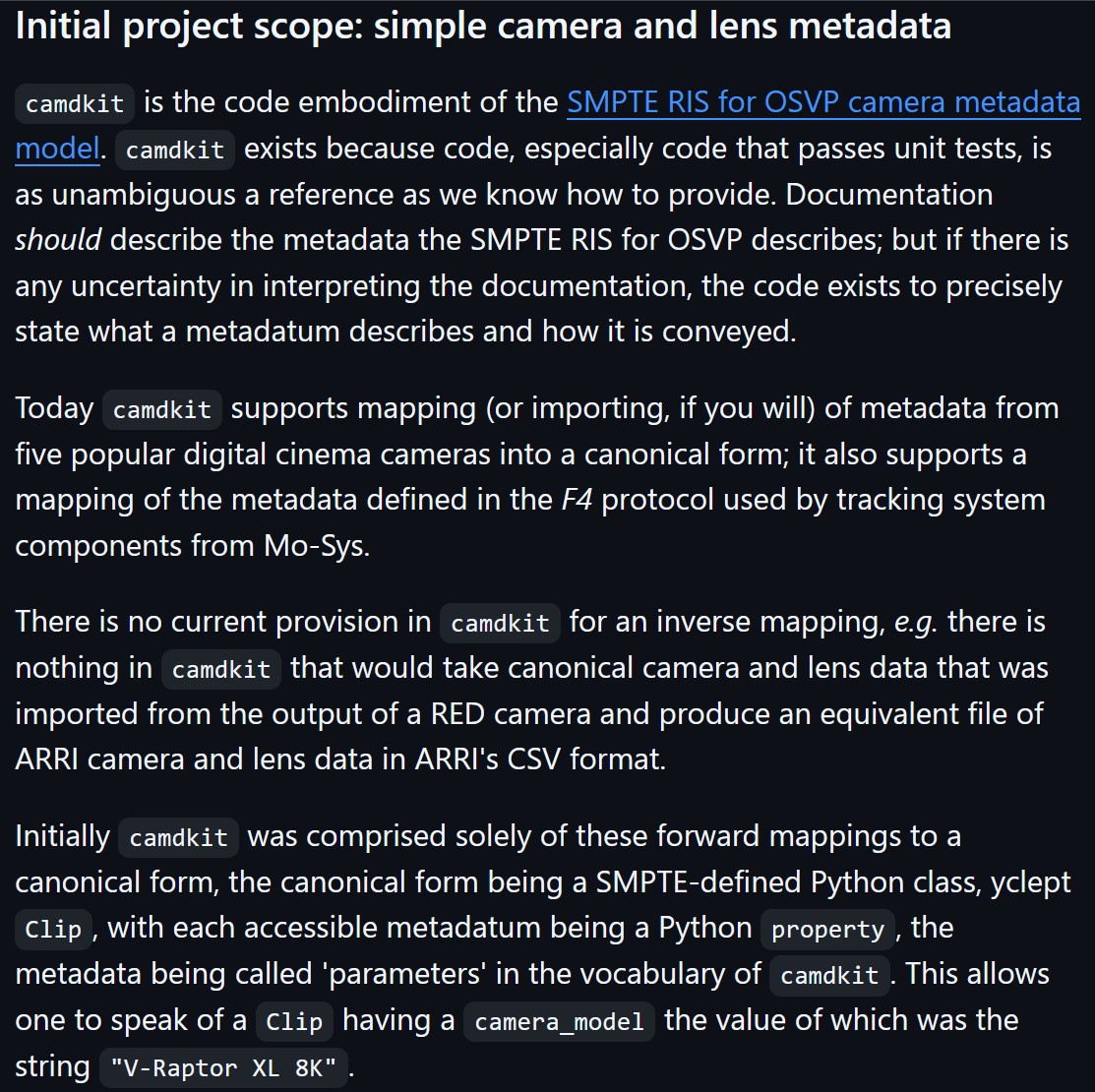RANDOM POSTs
-
fxguide.com – Joe Letteri Discusses Wētā FX’s new Facial Pipeline on Avatar 2 called APFSA (Anatomically Plausible Facial System)
Read more: fxguide.com – Joe Letteri Discusses Wētā FX’s new Facial Pipeline on Avatar 2 called APFSA (Anatomically Plausible Facial System)https://www.dgp.toronto.edu/projects/animatomy/animatomy.pdf
https://www.goldderby.com/feature/joe-letteri-avatar-the-way-of-water-vfx-interview-1205228595/
-
Camera Metadata Toolkit (camdkit) for Virtual Production
Read more: Camera Metadata Toolkit (camdkit) for Virtual Productionhttps://github.com/SMPTE/ris-osvp-metadata-camdkit
Today
camdkitsupports mapping (or importing, if you will) of metadata from five popular digital cinema cameras into a canonical form; it also supports a mapping of the metadata defined in the F4 protocol used by tracking system components from Mo-Sys.
-
Joe Murray – Creating Animated Cartoons with Character
Read more: Joe Murray – Creating Animated Cartoons with CharacterHi Everyone. I receive countless letters asking about my book” Creating Animated Cartoons with Character” which is now out of print, with the remaining copies being sold at huge prices. I’m not in favor of this, and it seems there are many who may benefit from the information who cannot afford such an expensive book. Since artists come in many economic brackets, I am offering a digital version of this book as a free download. No strings attached. Simply go to my website (JoeMurrayStudio.com) in the book section https://lnkd.in/gw6MHeBi and download your own copy.
Once you get passed the boring bio stuff, there is info on creating and producing two of my three shows, plus interviews with the late great Stephen Hillenburg ( Spongebob) Everett Peck ( Duckman) Craig McCracken ( Powerpuff Girls) Tom Kenny ( voice of Spongebob, Heffer and a zillion other shows), and many other amazing professionals discussing their craft. Some of the information about networks, studios, and streaming need an upgrade, but other than that I feel it still remains relevant.
If you can afford it, maybe pay it forward ( contributions to food banks, volunteering, etc.) And maybe re-post this where students and other artists may find it useful.
I hope it helps, and reaches those who have asked about it. Best to you!Local copy
-
James Brown – Living In America
Read more: James Brown – Living In Americahttps://www.youtube.com/watch?v=oHqUipinDyw
-
Ascii generators
Read more: Ascii generators.__ ____ ____ ____ | | _/ ___\/ _ \ / _ \| | \ \__( <_> | <_> ) |__ \___ >____/ \____/|____/ \/http://www.network-science.de/ascii/
COLLECTIONS
| Featured AI
| Design And Composition
| Explore posts
POPULAR SEARCHES
unreal | pipeline | virtual production | free | learn | photoshop | 360 | macro | google | nvidia | resolution | open source | hdri | real-time | photography basics | nuke
FEATURED POSTS
Social Links
DISCLAIMER – Links and images on this website may be protected by the respective owners’ copyright. All data submitted by users through this site shall be treated as freely available to share.








